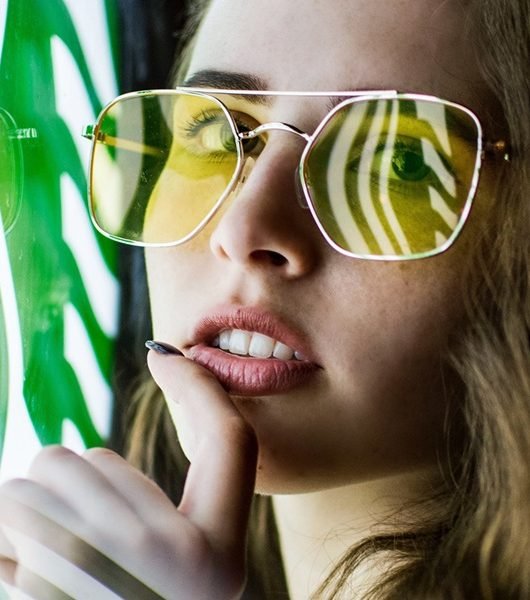Predictions In The Marketing, Brand, And Digital World In 2023 – The Good, The Bad, And The Uncertain
By: Ahmed El Gamal, Senior Director of Marketing, Jumeirah Group

Looking back at the last 12 months, 2022 was less predictable than one would think. Certain moves in the marketing, brand and digital world did shift as planned, but as the earth rotates around the sun and with all the external factors that affect how we live, work and play, the industry remains agile and reactive. So with that said, I’m going to embody the spirit of Zoltar in a fortune-telling arcade machine and look into my crystal ball of wonder, seeking what 2023 might bring.
The good:
- AI has been a buzzword for a decade at least; as we stand in the fourth industrial revolution, it is starting to shake up the marketing world very quickly. Introducing Generative AI: tools that OpenAI launched in the second half of the year, like DALL·E 2 and ChaptGPT, can seem like harmless fun, but they will rock the agency, photography, production, etc. world in both good and bad ways. AI tools featured on futurepedia.io can drive operational efficiencies and yet perhaps reduce the requirement for roles in specific functions. AI can suggest app design, build code, design flawless customer experiences, and even write ad-word strategies. A few agency x-colleagues confirmed using these tools to enhance their work. This prediction can sit in 2 sections in this article, depending on your relationship with AI. I hope AI becomes an ally and not a substitute for people; otherwise, winter is coming for the agency, production, and consulting world.
- We will start seeing a rise in more Lo-Fi content in 2023. Gen-Z has led the trend, and many brands have taken the first-mover advantage by repositioning their social and content strategy to align with the shifts. It is predicted that Gen-Z will account for 27% of the workforce by 2025, so I’d expect the perfectly polished content that takes hours to produce will need to get with the times. At the same time, customers will continue to expect and prefer video and immersive content over static content.
- We will continue to see unconventional brand collaborations next year; brands like Gucci in the luxury market spearheaded those moves when they launched collections with The North Face, Balenciaga, Adidas, and Ravi Darbar in 1 year. Outside of the luxury market, FMCGs continue to do it, and it’s a great power play when two brands with strong equities collab. Partnerships that combine non-conventional, non-competing brands that share consumer data will discover a niche avenue to capture and convert new customers as they drive sales for each other.
- Social media platforms will shift their strategies and focus more on their algorithms. The social graph we grew up using has become stale, and all the emerging platforms now give users unlimited access to content beyond those they follow, allowing for infinite content discovery based on interests and niches. The algorithm knows us better than we know ourselves. Algorithms will constantly try to serve great videos outside of the people you follow because there is a lot of great content. You don’t need to follow someone to see their videos which rewards content creators with massive reach. The battle between IG Reels and TikTok will continue for another year at the very least.
- Sadly, in the latter half of 2022, we saw layoffs in the thousands in the tech industry: Meta, Twitter, Amazon, Salesforce, and Snap, to name a few. While this is far from good, and cost-cutting could signal a global recession looming, these techies will hustle hard and continue to collaborate, and we will see a rise in new startups. These startups will be exciting and provide solutions for problems we didn’t know we had.
- Branding will continue to become cleaner and simpler. As social media usage rises, consumers seek companies that are sincere, open, and consistent with their beliefs. As a result, visual branding is becoming more crucial. Personalization and customization are essential to stand out in a crowded market, and a positive client experience is vital to fostering loyalty. With AI, machine learning, and immersive experiences helping firms differentiate themselves and improve the customer experience; technology is also playing a significant part in branding.
- 2022 taught us that the big platforms aren’t invincible as they battle for customers’ attention. Amazon, Microsoft, TikTok, and Apple are among the fast-growing companies increasingly competing with Google and Facebook for a share of the $300bn digital ad market. The two companies’ share of the global market also declined by one percentage point to 49.5% this year. This means we will see more innovative and competitive digital solutions to help marketers decide between attention, engagement, or impact.
- There is a paradox between personalized experiences and data privacy in that personalization often requires collecting and using personal data. In contrast, privacy concerns involve protecting personal data from being collected and used without the individual’s consent or knowledge. As a result, companies are drafting new playbooks between personalization and privacy by being transparent about how they collect and use personal zero-party data and by giving customers control over their data and the ability to opt-out of data collection. By doing so, companies can create personalized experiences that respect the privacy of their customers and build trust in the long run.
- The rise of automation will streamline processes and kill mundane tasks. Automation will help improve marketing efficiency and productivity, enhance targeting and personalization, improve customer experience, provide better data analysis and insights, and enable scalability. As a result, automation will help marketers work more efficiently and effectively, allowing them to deliver better results and create more value for their customers.
- Empathy-led marketing and purpose-driven companies are likely to be here to stay because they can create value for both their customers and their stakeholders and are well-positioned to thrive in an increasingly conscious and values-driven marketplace. Marketers will continue to be involved in ESG strategies re-building foundations for a better tomorrow. Over the recent years, we saw companies redefine their Purpose and be more articulate about their Why to future-proof them for future generations.
- Our industry will witness a new breed of creative polyworkers. Working on multiple projects or clients simultaneously is becoming more common in the creative world as the gig economy grows and more people seek flexible and diverse sources of income. Remote work and the need for diversification are also contributing factors. The rise of polywork reflects the increasing demand for flexibility, the growth of the gig economy, and the need for diversification in a highly competitive and rapidly changing market.
- Web3, one of the most exciting spaces that has yet to be fully leveraged to its potential, has the capability to transform marketing by strengthening data privacy and security, targeting and personalization, transparency and accountability, giving people more control and ownership over their data, and enabling greater reach and scalability. Blockchain will make it possible to store and transfer data more securely and privately, collect and analyze data more precisely and granularly, make processes more transparent and traceable, and have more control and ownership over personal data. These capabilities can aid marketers in delivering more tailored and targeted marketing messages, fostering customer trust, and reaching a larger and more varied audience.
- Creator tools will continue to rise, making everyone a content creator. We will continue to see a rise in both UGC and IGC, and IGC will be scrutinized for its authenticity (or lack thereof) by both viewers and regulators. Beyond the disclosure of sponsored content, the truth in whatever they are advertising will be questioned.
- Influencers-turned-investors will continue to rise. Beyond expanding their personal brand, influencers will play a huge role in scaling brands outside of social platforms through financial investments or even as founders. They will become a strong contributor to emerging brands right next to angel investors. Founder influencers are rising in this category as they promote their startups while pumping up their personal brand as they document the process of building their companies.
- Conversational commerce will get more intelligent and more efficient thanks to both AI and the shifts in the humanization of brands. Chatbots, live chat, and messaging tools will offer a seamless commerce experience that will drive better and more effective conversions as sales transactions expand outside of traditional dot coms giving end-users convenience to shop in frictionless environments.
The bad:
- “There’s nothing without money, honey” was a line I heard when a woman tried to pick up a pamphlet in London from a newsstand. The same is true for all news websites, and we will start to see more paywalls. It’s excellent for journalists but could be better for digital ad distributors. Inventories will decrease, and people will continue to try to use browser extension hacks. While there is a shift in digital ad spending YoY, digital is now an overused buzzword because everything is digital.
- Data is the new oil; we’ve heard that before. This week I had a fraud transaction on my credit card, probably due to a data breach on a website I purchased something on. This wasn’t the first time it happened, and probably not the last. Companies that don’t secure and encrypt the data they gather or do so in ways that are opaque or breach their customers’ privacy will suffer negative repercussions, including loss of confidence, regulatory penalties, and reputational harm.
The uncertain:
- Many brands need to learn what they are doing in the metaverse. It is a great sexy platform, but they treat it like playing The Sims on the internet. The metaverse’s full potential is yet to be unlocked, and it’ll take five years for us to get there as people start to get comfortable with the hardware. We saw a lot of successful concerts and events and at the same time a lot of ghost towns. As brands invest in virtual showrooms and experiences that blend into a phygital world, the metaverse still needs to be a space part of an always-on strategy. It has excellent potential to be something great and will be a great space for the gaming industry, but 2023 isn’t the breakthrough year for brands. Influencers will start to rise on the metaverse (aka metfluencers), but their popularity will remain in the world they settle in. Don’t get me wrong, as marketers, we shouldn’t sit and wait while others race by. Brands need a test-and-learn strategy on the metaverse but call off the big bets for now.
- The road (or race) to a cookie-less world by 2024 is imminent. The usage of cookies, while declining, is still very common, and it will probably take some time before businesses switch entirely over to other tracking strategies. In light of this, it is evident that companies are beginning to research and invest in these alternatives in preparation for a day when cookies would be obsolete. Of course, privacy will remain a key concern for companies, governments, and users, but the financial and business implications of regulations on the digital advertising world are the elephant in the room that people need to talk about more.





